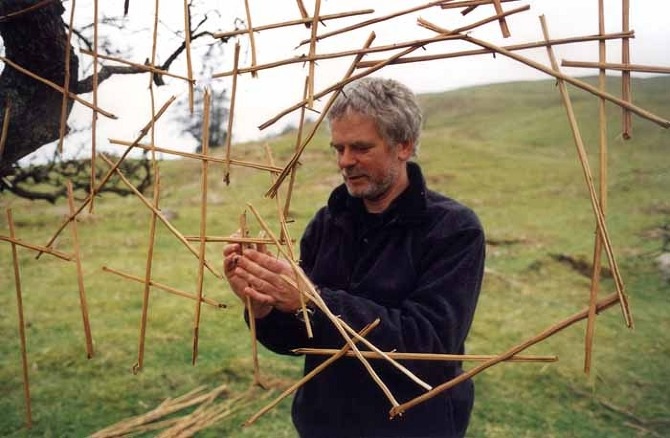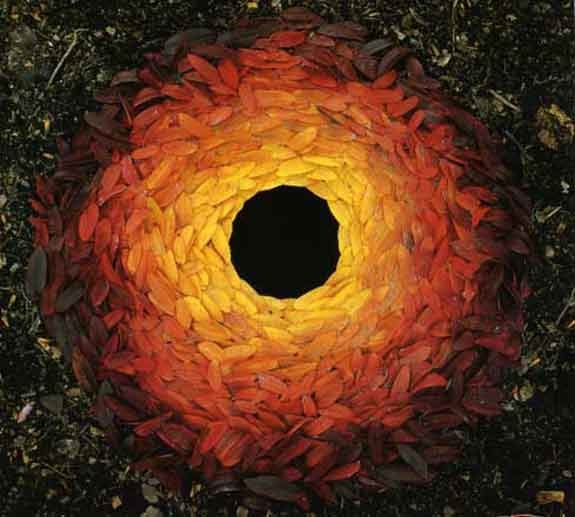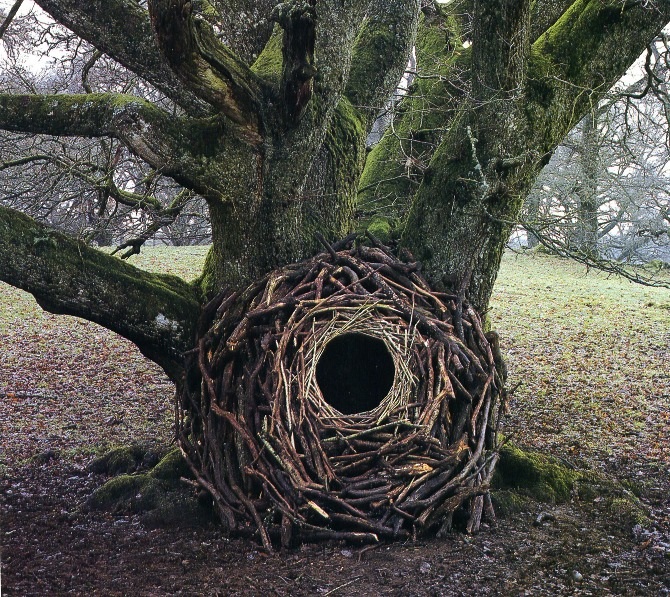| Andy Goldsworthy's "earth art" is unbelievable. Last year, when first learned of Goldsworthy, I attempted to make my own sculpture out of the earth. Though, this first venture did not turn out as well as I had planned, I've had a strong urge to give it another go. That said, I've been familiar with the aesthetic of Goldsworthy's work for a while now, however, it wasn't until just recently that I was inspired to do more research into his unique craft. Goldsworthy was a Fine Arts student at Preston Polytechnic in northern Ireland. He very much disliked working indoors, so he escaped to Morecambe Bay. It was there that he would create structures from stone and sand that the tides would then wash away. He soon realized that his art inspiration was tied more closely to the agricultural labor he did during his youth than to the studio art classes he took at Preston. In the specific Smithsonian article I came across, author Arthur Lubow claimed that Goldsworthy should be compared to the latter-day Impressionists (rather than Druids), for he is just as transfixed by natural light and its ability to transform a landscape. Though Goldsworthy chooses to spend most of his time working in more rural areas, his definition of a natural setting is much more expansive. He claims that nature is "in a city, in a gallery, in a building. It's everywhere we are." | Perhaps what I admire most about Goldsworthy's work is its ephemeral nature. His ability to part ways with a piece after photographing it in its best light shows how he is not concerned with making his mark on the world, but rather with learning to appreciate the beauty of moment even as it fleeting. "Looking, touching, material, place and form are all inseparable from the resulting work. It is difficult to say where one stops and another begins. The energy and space around a material are as important as the energy and space within." -Andy Goldsworthy |




